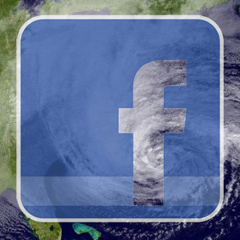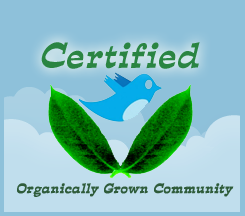 The first haiku I will not share with you in haiku form. It was constructed strictly to win a contest, and I’m not talking about a beauty contest here. At stake were ten new BlackBerry PlayBooks, to be awarded to the ten best haikus published on Twitter about the new device.
The first haiku I will not share with you in haiku form. It was constructed strictly to win a contest, and I’m not talking about a beauty contest here. At stake were ten new BlackBerry PlayBooks, to be awarded to the ten best haikus published on Twitter about the new device.
The contest was beautifully simple: Tweet an original haiku about the new BlackBerry PlayBook while complying with the following restrictions:
Rule 1:
The poem must consist of three lines of 5, 7, and 5 syllables respectively.
Rule 2:
The poem must not mention competing products (Read: Don’t mention the iPad).
But most of the entries went something like this:
Please for God’s sake give me
A PlayBook cuz I wanna win really bad!
Down with iPad!
This created somewhat of an unfair advantage for winning contestants like Lisa Akari who knew how to follow rules, knew how to construct elegant haiku, and were familiar with Basho. Her approach was to honor the form while having fun. Sadly, there is also a low road to victory.
My approach was to create the kernal of a hypothetical marketing campaign. To be honest, I’m a little in love with my concept, but my execution through haiku was ungainly, like the debut of a beautiful model in ill-fitting clothes. So in this blog post I’m pulling it out of haiku and presenting the concept alone.
I wanted to convey a sense of universe-at-your-fingertips awe about this new tablet computer. I wanted to capture the feeling you would get if you could have this power with you wherever you went, from an evening at home to an afternoon at the neighborhood coffeeshop to a rained-out vacation on the Oregon Coast. All accessible through a tablet computer. I came up with this:
Haiku 1 Tagline Concept
Columbus was wrong. The world is flat.
I do think this is much more interesting than the official PlayBook tagline: “The world’s first professional-grade tablet,” which violates Rule 2 in spirit even if it does not name the iPad explicitely, and has readers reaching for their Chicago Manual of Style: Is that a compound adjective and do I need a hyphen?
So yes, I prefer my approach and I want to see it used in a new marketing campaign. That would be the greatest prize of all. But getting a brand new PlayBook is a decent consolation prize and I’m eager to get that into my hands as well. When you enter a contest on Twitter, there is always a little bit of doubt: What if the contest is a scam? What if the Twitter @blackberry account is run by some pimply teenager in Medicine Hat (the Gas City), Alberta?
I have to admit I started to worry after getting the initial “You’ve Won” announcements and then not hearing much more. So I sent the following haiku to fellow winner Lisa Akari as we were both waiting for updates:
Tagline Haiku 2
Blackberry haiku
Sweet promise, like morning mist
Evaporating
But then I checked my email. There was a notification about my winning entry and a new form to fill out. This time they asked for my social security number as well as a written signature. So at last I will receive my new PlayBook as a genuine winner of the haiku contest. Or I will provide my social security number and signature to some scam artist in Alberta.
It is hard, sometimes, to separate the hope we have for tomorrow from the coarse reality of the moment. As Matsuo Basho recorded in The Narrow Road to the Deep North:
Bitten by fleas and lice,
I slept in a bed,
A horse urinating all the time
Close to my pillow.
Read Full Post »










 Honesty is not a policy. Transparency is not a communication strategy. But you’d hardly know this from the number of so-called “community features” appearing across company websites today—all in the spirit of an open and transparent approach that we’re told is so critical to survival in the Web 2.0 world. While it’s true that frank communication is important for credibility, smart companies have the right conversations in the right places. A forum that publishes unfiltered comments should also include responses from real people in the company, creating a dialog between those who care enough about a product to share their opinions in public. Simply giving customers extra places to complain without monitoring and responding will more likely damage a company’s credibility than improve it.
Honesty is not a policy. Transparency is not a communication strategy. But you’d hardly know this from the number of so-called “community features” appearing across company websites today—all in the spirit of an open and transparent approach that we’re told is so critical to survival in the Web 2.0 world. While it’s true that frank communication is important for credibility, smart companies have the right conversations in the right places. A forum that publishes unfiltered comments should also include responses from real people in the company, creating a dialog between those who care enough about a product to share their opinions in public. Simply giving customers extra places to complain without monitoring and responding will more likely damage a company’s credibility than improve it.